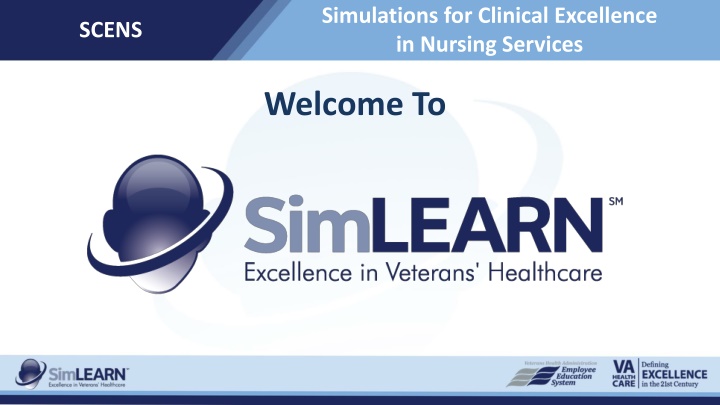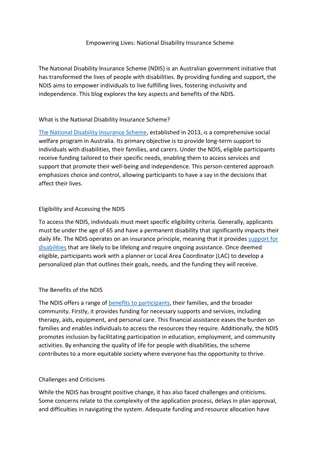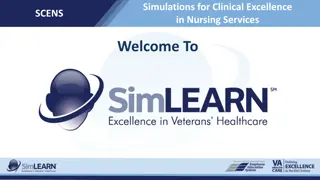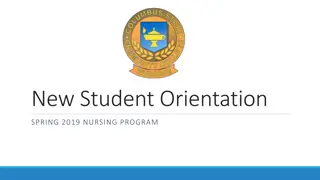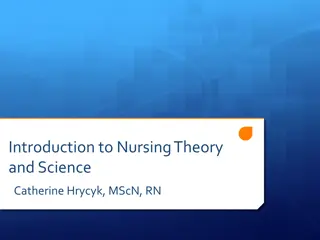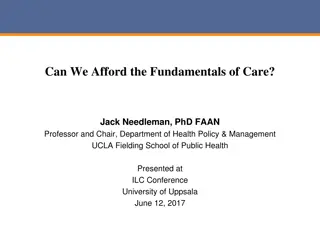Simulation and Training in Nursing: End-of-Life Care Focus
SCENS provides simulations for clinical excellence in nursing services, with a current program focused on end-of-life care. The training aims to equip nurses with the skills to handle sensitive end-of-life situations, including communicating effectively, providing appropriate care interventions, and initiating hospice consultations. The program addresses the emotional and physiological impact of the content, emphasizing best practices for improved outcomes in end-of-life care. Palliative care and hospice care are distinguished, highlighting the importance of quality of life and comfort in addressing patients' and their families' needs during terminal illnesses. The program also features the National Bereaved Family Survey's questions emphasizing staff kindness, communication, spiritual support, and pain management.
Download Presentation

Please find below an Image/Link to download the presentation.
The content on the website is provided AS IS for your information and personal use only. It may not be sold, licensed, or shared on other websites without obtaining consent from the author.If you encounter any issues during the download, it is possible that the publisher has removed the file from their server.
You are allowed to download the files provided on this website for personal or commercial use, subject to the condition that they are used lawfully. All files are the property of their respective owners.
The content on the website is provided AS IS for your information and personal use only. It may not be sold, licensed, or shared on other websites without obtaining consent from the author.
E N D
Presentation Transcript
Simulations for Clinical Excellence in Nursing Services SCENS Welcome To
SCENS End of Life: Inpatient
Disclaimer SCENS The sensitivity of the content discussed during this scenario may trigger emotional or physiological responses Please inform the faculty if this is uncomfortable for you
Learning Objectives SCENS 1. Perform the appropriate interventions when providing care for the patient experiencing end of life Initiate facility specific Hospice and palliative care consultation Communicate effectively when managing care for the patient experiencing end of life 2. 3.
Why? SCENS Center for Health Equity Research and Promotion The PROMISE Center Performance Reporting and Outcomes Measurement to Improve the Standard of care at End-of-life Define and disseminate best practices contributing to improved outcomes for Veterans near the end of life and their families The National Bereaved Family Survey VA Comprehensive End of Life Care initiative (CELC) VA Hospice and Palliative Care Palliative Care National Clinical Template (PC-NCT)
National Bereaved Family Survey SCENS Sample Questions How often were the staff kind, caring, and respectful? How much of the time were the staff willing to take time to listen? How often did the staff provide the medication and medical treatment that the Veteran wanted? How often did the staff who took care of the Veteran keep you or other family members informed about the Veteran's condition and treatment? How much of the time did the staff provide you and the Veteran with the spiritual support you would have liked? Family perceived pain management was optimal, very good, or poor? (U.S. Department of Veterans Affairs, 2015) 6
Palliative Care vs. Hospice Care SCENS Palliative care Comfort care Emphasis on quality of life, not quantity Mitigate suffering May involve curative measures Does not have time restrictions Hospice Comfort care Terminally ill Within six months of death Not seeking curative measures
Hospice and Palliative Care SCENS Hospice provides palliative care Advocate for the patient and family Team approach Holistic Views dying as a normal process Integration of spiritual and psychological aspect of dying 8
Palliative Care SCENS Verify required documentation Advance directive Allow family visitation at all times Explain the process of dying Morphine Non-essential medications Blood tests and/or diagnostics Vital signs Artificial fluids Mouth care Oxygen versus compressed air Grieving process Cultural and spiritual needs Talk to the patient
Signs and Symptoms of End of Life SCENS Decreased level of consciousness Change in breathing pattern Death rattle https://youtu.be/LgY8pZgtDjQ Mottling Decrease in body temperature Decreased bodily functions
Facility-Specific SCENS Policies and procedures Palliative consult process Who to contact What to document Resources available Process after death Who to notify Post mortem care Special ceremonies for Veterans Release/transport of the body
Priorities SCENS Verify advance directives including code status Patient-centered care Utilize therapeutic communication Psychosocial needs Spirituality Anticipate any needs for equipment, supplies, and medications Appropriate interventions Emphasis on the goal of a good death Dignified with controlled symptoms
Potential Issues SCENS Psychosocial Distraught family members Equipment or supplies Medication
Summary SCENS 1. Reviewed the appropriate interventions when providing care for the patient experiencing end of life Discussed facility specific Hospice and palliative care consultation Described effective communication when managing care for the patient experiencing end of life 2. 3.
Questionmark SCENS
End of Life: Inpatient Info SCENS Stanley Goodman Eighty-nine (89) year-old male is an inpatient admitted 24 hours ago for altered mental status (AMS) who is unresponsive due to a fall resulting in a subarachnoid bleed. The spouse/family member is at the bedside. Past Medical History: Dementia Fibromyalgia Rheumatic fever Falls 30 year one pack per day smoker Past Surgical History: Mitral valve replacement 20 years ago Medications: Pregabalin 100 mg three times daily Donepezil 5 mg one time daily at bedtime Allergies: Hydromorphone and oak tree pollen
